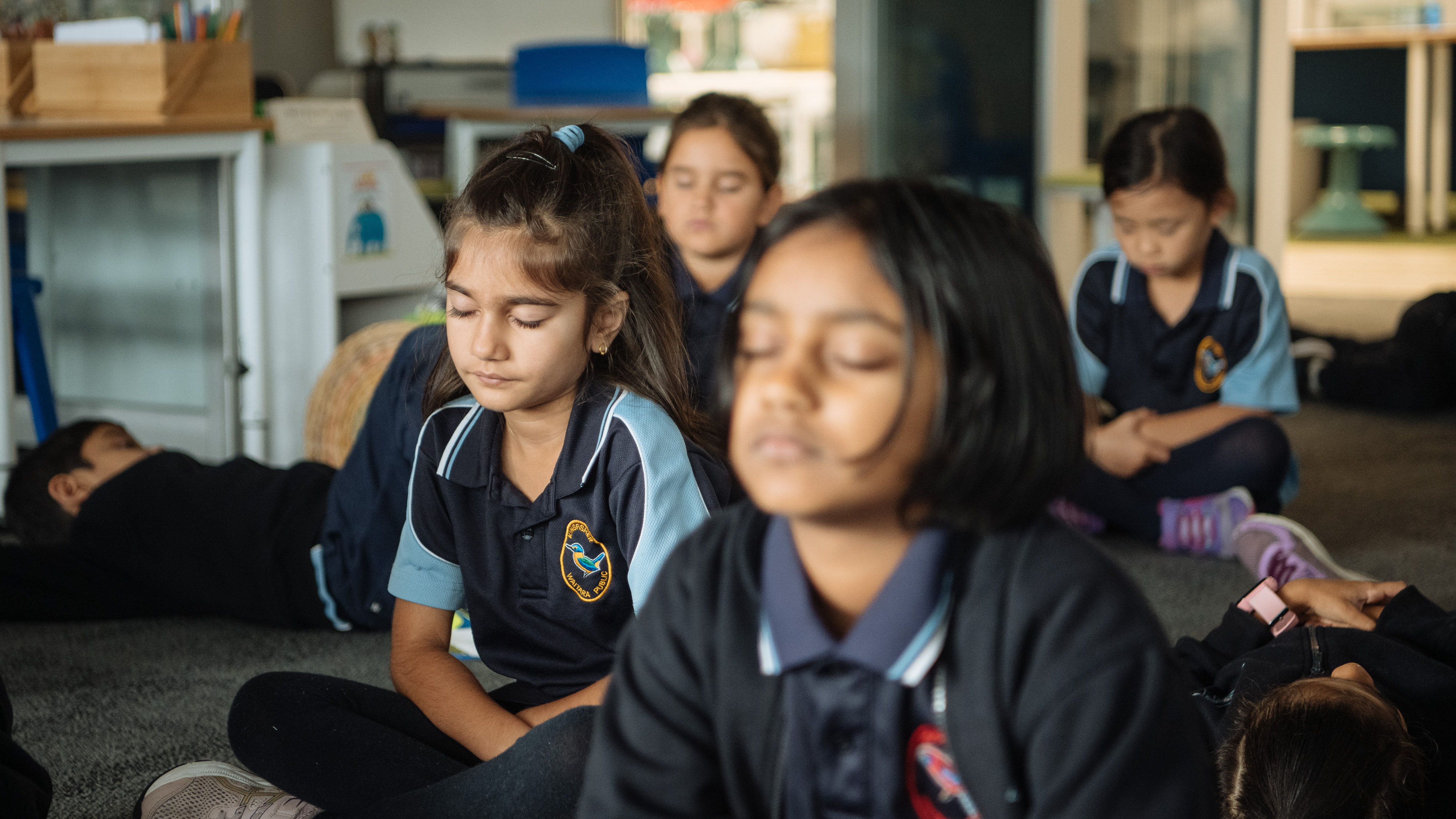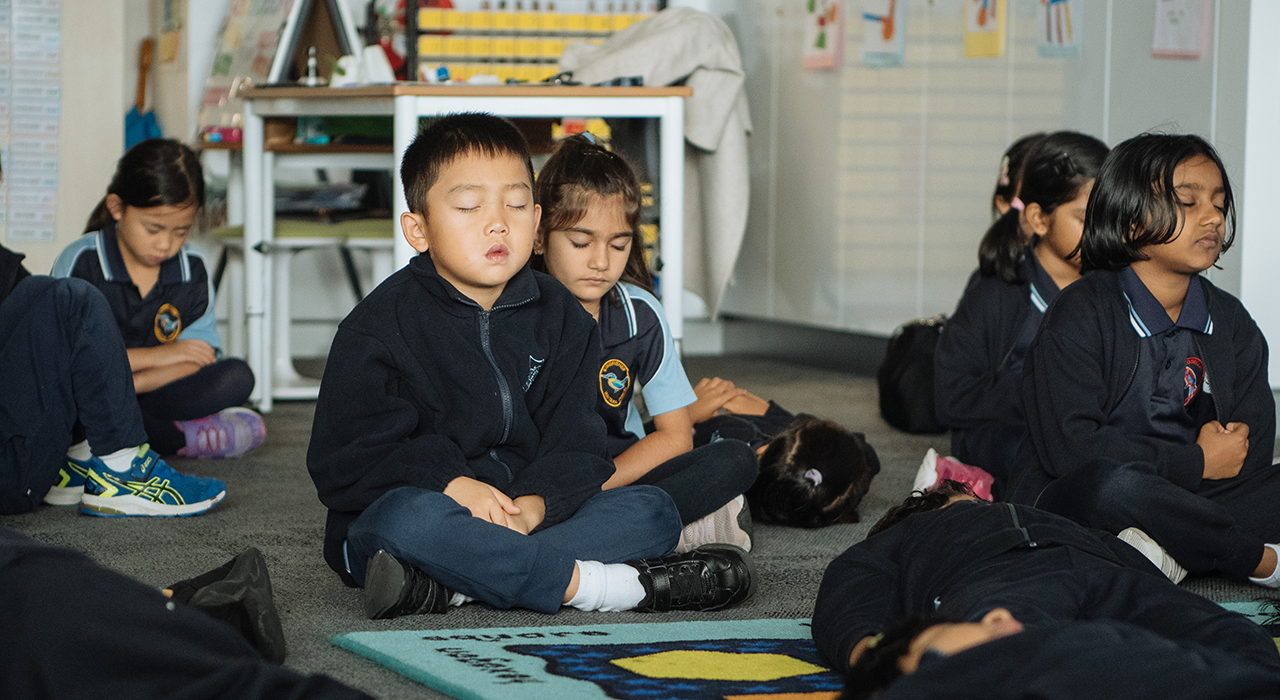Gratitude. It’s a term we’ve all used a lot in recent years, as the topic of mental health becomes more prominent in schools, workplaces and at home. But what does gratitude really mean? And how can it affect how you’re feeling?
To answer these questions, we spoke with Smiling Mind’s in-house psychologist, Therese Sheedy, who deep-dives into the benefits of gratitude and how we can properly express it.
What is gratitude? (And what isn’t?)
Put simply, experiencing gratitude is the feeling of being grateful. Many of us confuse gratitude with other feelings that, although valid and beneficial, don’t reap the same mental wellbeing benefits.
Gratitude is the act of recognising something external to you that has enhanced your life (whether in a big or small way), and expressing thankfulness for it.
“The comparison of the self versus the external is really valuable in making clear what you’re feeling grateful for,” Therese explains. It’s this characteristic of gratitude that sets it apart from feelings like pride and appreciation.
When we’re proud of ourselves, we’re experiencing an inner reflection of effort and hardwork. And although “it’s healthy for us to say ‘I am proud of myself’” Therese explains, the lack of external recognition means it’s not a complete expression of gratitude.
Similarly, simple appreciation is not gratitude. The necessary step of recognising what happened before, that allowed for a good outcome, is what makes gratitude a fuller, more mature thought process than simply appreciating something that makes you happy or pleased.
How does this look in practice?For example, let’s say you just received a promotion at work. For you to fully express gratitude for this good outcome, Therese explains that you would look externally and try to recognise what happened for you, to experience the positive outcome of the promotion. In this example, you would recognise and feel grateful that your company has chosen to recognise your hard work and reward you with a promotion. |
Expressing Gratitude and Your Wellbeing
“When we recognise gratitude as external to us, we feel seen. We feel valued. That’s what enhances our wellbeing,” Therese emphasises. “And when we actually show that expression of gratitude, our wellbeing enhances even further.”
The science behind gratitude within positive psychology has shown time and time again, that recognising and expressing gratitude can:
- Improve and help build high-quality social relationships
- Raise the frequency of positive emotions, thoughts and behaviours
- Improve mental fitness and the ability to cope with problems
- Decrease stress and regulate blood pressure, heart rate and breathing
- Improve your self-esteem and general life satisfaction
With benefits like these, it makes sense that gratitude is recognised as a core skill in the Smiling Mind Mental Fitness Framework. Like any other skill, practising gratitude will help you improve over time.
Like any other long-term skill worth learning, however, Therese warns that gratitude “is not a quick fix. We shouldn’t look at gratitude strategies to try and shift our mood or reframe our lives. It loses its authenticity.”
Quality over quantity applies here, as Therese explains that “one big thing that you’re truly grateful for, will always outweigh the benefits of ten little things. This is deep gratitude. The more intensely we feel it [gratitude], the higher our levels of wellbeing.”
How to Authentically Express Gratitude
To ensure we properly recognise and authentically express our gratitude, Therese suggests the Who, What and Why method.
The goal of this method, according to Therese is to “look for the bigger impact on ourselves,” encouraging us to answer the question “what have I received today that has enhanced my life?”
Tip: If you’re ever stuck on how to journal for mental wellbeing, this method is a great way to start a gratitude prompt, or even a dedicated gratitude journal.
Question 1: Who (or what) should I be grateful to?
Think back on your day, week or the recent experience that led to a good outcome. Who has done something or influenced something for you to allow for that outcome to happen?
Question 2: What did they do or what did they influence?
Now that you’ve recognised who was involved, pinpoint the specific thing they did, or circumstance they influenced that positively affected you and your circumstances.
Question 3: Why am I grateful for this “thing” or “impact”?
Now that you’ve examined the external circumstances that led to a good outcome, it’s time to reflect on why this outcome or experience is significant to you and your wellbeing.
From here, “there has to be an impact that enhances your life and adds value. It should be something that you want to connect with others through somehow. You should want to express it,” Therese says.
The three-step Who, What and Why method helps you translate late feeling gratitude, to expressed gratitude. This will help you pay the positive emotions forward—a phenomenon Therese calls “the chain of gratitude”.
“We should want to enhance the world in some way, because of how we feel when we experience gratitude,” Therese concludes.
The mental health benefits of practising gratitude are inarguably significant. From boosted self-esteem, higher levels of positive emotions and stronger relationships, gratitude expression is a skill we should all strive to have in our arsenal.
So, whether you’re searching for ways to support your child’s mental health, or you’re looking to strengthen your own mental fitness, Smiling Mind Mental Fitness Framework can help.
You can find a collection of meditations and activities to build your gratitude practice in the Smiling Mind App.









.jpg)





